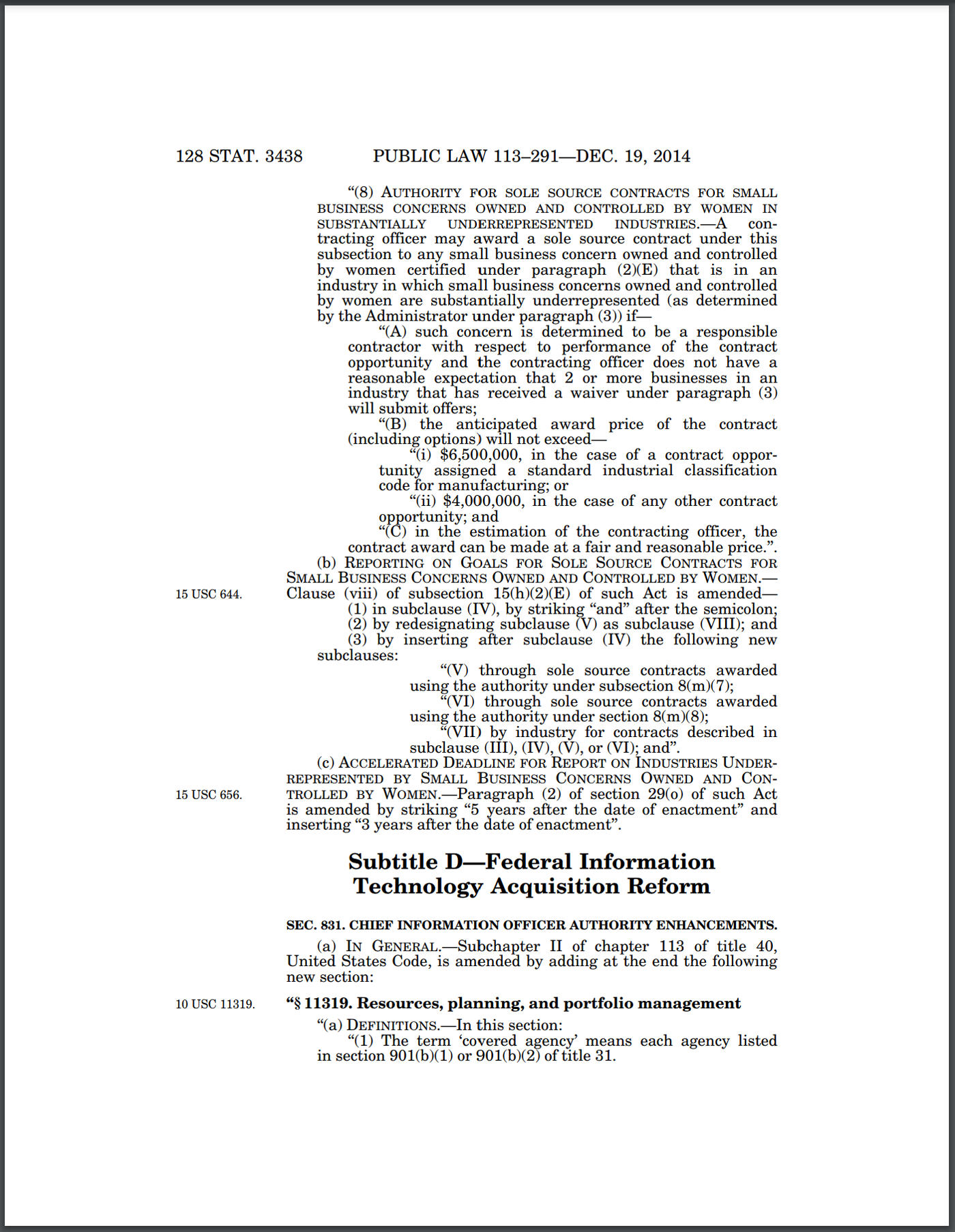Understand the Federal Information Technology Acquisition Reform Act (FITARA) of 2016
In 2014, Congress passed the Federal Information Technology Acquisition Reform Act, or FITARA.
FITARA is the first major overhaul of Federal IT in 20 years.
FITARA is significant because by 2014, the Federal Government was spending an estimated $80 billion a year on IT products and services, and half of that was for simply maintaining out of date systems.
FITARA focuses on streamlining the acquisition of IT services, and reducing waste of duplicated services.
FITARA became law as part of the National Defense Authorization Act for fiscal year 2015, and made changes to the Rehabilitation Act of 1973 and the E-Government Act of 2002.
As part of FITARA, the House Oversight Committee's Subcommittee on Government Operations assesses each agency and provides the agency a graded score on a central government dashboard.
Multiple chief information officers
Prior to FITARA’s enactment, every group or department within an Agency could have its own CIO. After FITARA, each agency may only have a single CIO.
According to FITARA, the CIO is responsible for all successes and all failures of all IT efforts. That’s a substantial charge.
Under FITARA, the President of the United States is responsible for appointing a CIO per agency, with the exception of the Department of Defense.
Also under FITARA, all CIOs become part of a Chief Information Officers Council.
Ensuring effectiveness
FITARA also mandates the General Accounting Office (GAO) to ensure the effectiveness of the council in adhering to the law.
FITARA enables the Federal CIO and OMB Director to perform an audit of all IT assets and then reduce duplicate web sites.
This is very, very important as the Federal Government typically develops multiple projects through different agencies to support broader efforts, such as vaccine distribution. Under FITARA, the Federal CIO and OMB Director can work across agencies to ensure only the necessary projects are being completed.
Funding FITARA
FITARA creates cloud services working funds. Within government, mandates, memoranda, and directives can be put in place, but if there is no funding, typically there are no results. By creating working funds, the government is enabling its agencies to meet the mandates of FITARA.
Centers of excellence (COE's)
FITARA create centers of excellence for applications and for infrastructure. Because the government is so large and so distributed, it is difficult to distribute best practices and governance procedures beyond the boundaries of one agency, and sometimes, even between groups in an Agency. The COE's help to promote cloud adoption leveraging best practices and optimization.
Strategic planning
FITARA requires the OMB Director to create a five year strategic plan to develop, strengthen, and solidify acquisition cadres. This is important as it ensures that the OMB Director continues to keep a watchful eye on how acquisition is occurring across and within agencies, and to continually keep pace with cloud adoption.
Guaranteeing value, ROI, and transparency
FITARA requires that the Federal Procurement Policy Administrator (PPA) prescribe regulations with the submissions of contracts that must include a comparative value analysis.
FITARA also requires greater transparency about blanket purchase agreements (BPAs). A BPA is a simplified method of filling anticipated repetitive needs for supplies or services by establishing "charge accounts" with qualified sources of supply. FITARA attempts to ensure that the government does not become locked in to having one cloud provider and then just getting billed forever for cloud services.
Open source software
FITARA establishes guidance on open-source software as it relates to the Government’s position of technology neutrality.
FITARA also requires the OMB Director to issue guidance on the use and contribution to open-source software. Just as the government does not want to become locked into a single cloud solution provider, it also does not want to be locked into licenses for commercial software products that are very costly to remove.
OMB’s official guidance was published as part of OMB Memorandum M-15-14: Management and Oversight of Federal Information Technology.
